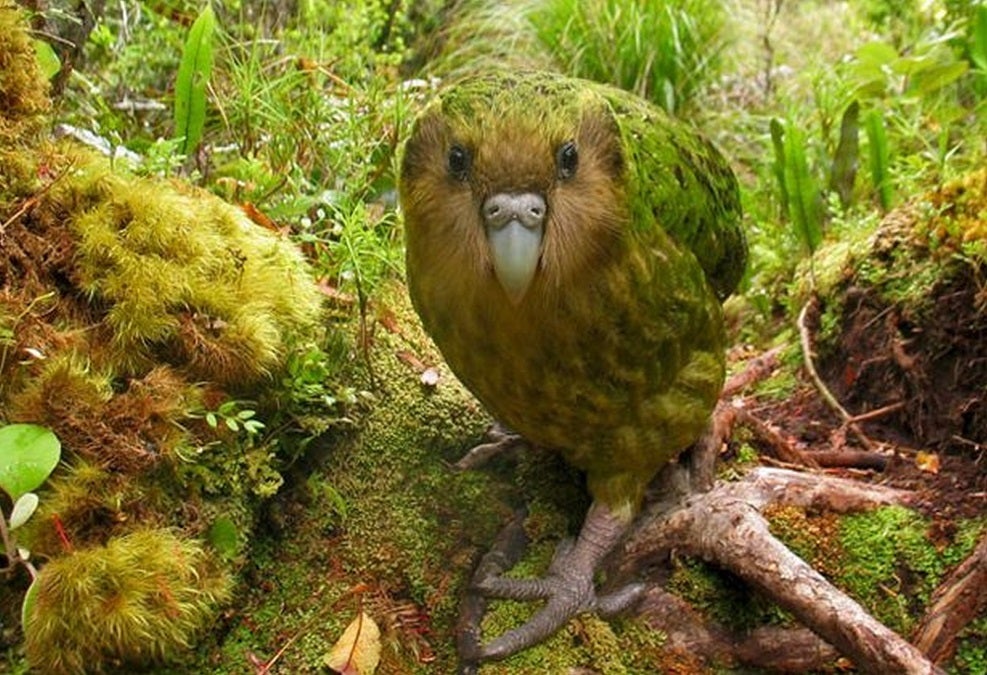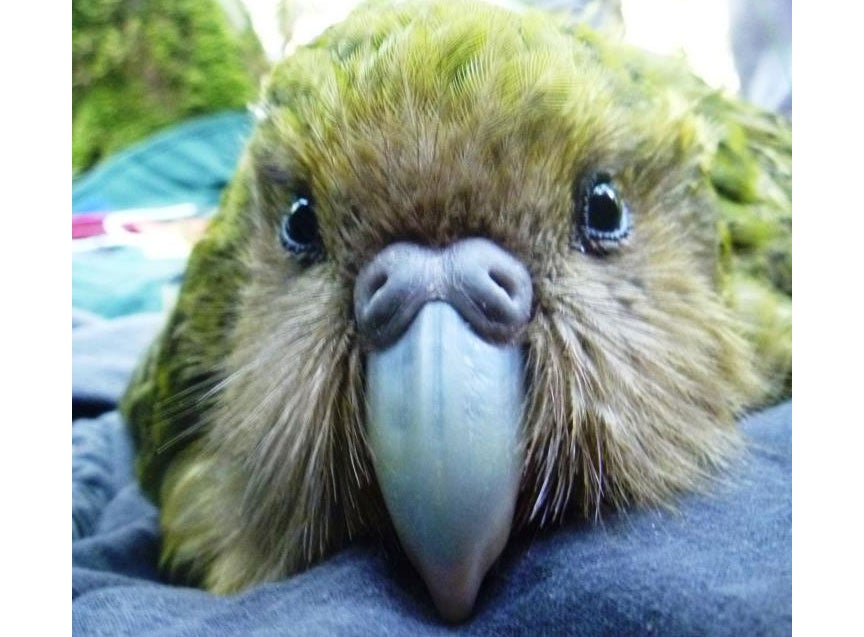Saving a crushed egg with tape and glue: Why you should care about the kakapo
It was jokingly called the "world's largest, fattest and least-able-to-fly parrot" by Douglas Adams, but make no mistake, the kakapo is truly remarkable

Your support helps us to tell the story
From reproductive rights to climate change to Big Tech, The Independent is on the ground when the story is developing. Whether it's investigating the financials of Elon Musk's pro-Trump PAC or producing our latest documentary, 'The A Word', which shines a light on the American women fighting for reproductive rights, we know how important it is to parse out the facts from the messaging.
At such a critical moment in US history, we need reporters on the ground. Your donation allows us to keep sending journalists to speak to both sides of the story.
The Independent is trusted by Americans across the entire political spectrum. And unlike many other quality news outlets, we choose not to lock Americans out of our reporting and analysis with paywalls. We believe quality journalism should be available to everyone, paid for by those who can afford it.
Your support makes all the difference.Conservationists in New Zealand are celebrating after an extremely rare kakapo chick hatched from a cracked egg held together by nothing more than tape and glue. The bird joins a global kakapo population of just 125 birds – but what makes these animals so unique and why are they worth saving?
To describe a kakapo as concisely as possible you’d say that they're a species of flightless parrot: one that is ground-dwelling, nocturnal and thoroughly rotund.
However, this barely even scrapes the surface of the kakapo's strangeness - a quality that is in no small way thanks to the fact they developed in the isolated environment of the islands of New Zealand.
This evolutionary upbringing accounts for some the bird’s odder physical characteristics, with the abundance of food and an absence of ground-based predators encouraging the kakapo (the name translates as ‘night owl’) to sacrifice the power of flight in favour of becoming more “thermodynamically efficient” – that is to say, they piled on the pounds and at 2kg to 4kg are the heaviest parrot around.

However, kakapos compensate for their inability to fly with superb camouflage and a tendency to freeze completely when startled.
These two traits combine to form a pretty good defence against the unwanted attention of eagles (who find their prey mostly by movement) but they unfortunately made the bird easy pickings for the cats and rats introduced by European settlers.
These predators decimated kakapo populations and it’s now the responsibility of the New Zealand government’s Kakapo Recovery Plan to save the species, swooping in wherever they find the birds and reloacting them to ‘safe’ islands, where they provide feeding stations for the birds and even hand-raise chicks.
This will likely be what will happen to the 'miraculous' Lisa One, the offspring of Lisa (there are so few kakapos that individuals are all known by name), a kakapo mother that inadvertently crushed her own egg.
And despite the incredibly frail looking bundle of fluff that successfully hatched from Lisa’s egg, it’s likely that this chick will outlive most people reading this article: life expectancy for kakapos is an astounding 95 and individuals can live up to 120, making them possibly the longest-lived bird in the world.
Kakapos are also notable for their friendly behaviour and have been commonly kept as pets by both the Māori and European settlers. The English ornithologist George Edward Grey (who wrote the first formal descriptions of the parrot in 1845) said that his own pet kakapo’s behaviour towards him was “more like that of a dog than a bird”.
Wild kakapo readily approach strangers and are known to climb and even preen them. However, this friendliness might not always be welcome: the clip below shows a hand-reared kakapo named Sirocco attempting to mate with the zoologist Mark Carwardine as a chuckling Stephen Fry looks on.
Carwardine might have mixed feelings about the encounter but for Sirocco it was his ticket to stardom: the amorous bird has leveraged his YouTube fame to become the offical representative of the kakapo cause, travelling with his handler to promote the conservation efforts.
The clip above also hints at another of the kakapo’s unique qualities: its incredibly varied vocalisations. As well as making the usual ‘skraak’ noise associated with most parrots, they also make a metallic, nasal ‘ching’ noise and an amazing subsonic ‘boom’. (Click each of those words to hear an audio clip of the kakapo in action).
These unique booming and chinging noises are actually part of the bird’s courtship rituals. During breeding season the males dig out saucer-like depressions in the ground which act as amplifiers for these calls, with the resulting sounds heard up to several kilometres away.
Click here to find out more about the Kakapo Recovery Program
Join our commenting forum
Join thought-provoking conversations, follow other Independent readers and see their replies
Comments